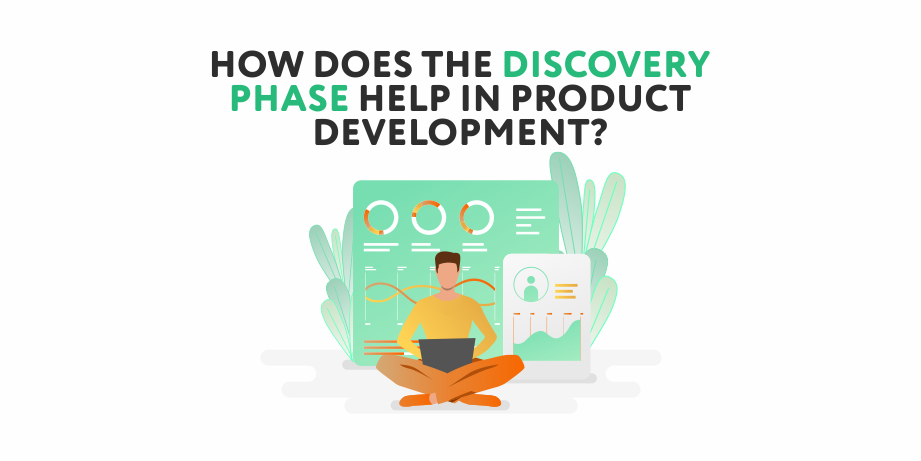Once you decide to start a small business, it is a great temptation to jump straight into the coding stage. Nevertheless, undertaking the product discovery phase before the app development is the smartest solution. Especially, if your final goal is to build a high-quality digital product that aligns with your business objectives.
As the saying goes: “One minute of planning saves you the 10 minutes of execution.” This is exactly what the discovery phase of product development is all about. It is crucial to have a clear understanding of whether your product will be able to justify resources (time and money) dedicated to its implementation. Therefore, if you have only a general idea of a product or you’ve already drafted a business plan, still you have to evaluate your project.
At 2muchcoffee, we follow a specific procedure of how to implement a discovery phase. In this article, we will share our approach and explain what is the discovery phase and why you should care about it.
What is a Discovery Phase?
The definition of the discovery phase stands for comprehensive research to collect as much as possible information in order to plan the entire digital project. The main role of the discovery phase is to understand the ins and outs of the product and provide the answers to the following questions:
What is the final goal of the digital product?
What are the current challenges in the specific market?
What pain points will be solved with the product?
How will this product stand out from the competition?
What will be a unique selling proposition for the product?
Who is the targeted audience?
What are the different needs/requirements of the audience?
What will the user journey look like?
What platform are we building the application for?
What will be the functionality of the product?
What will the brand style look like?
What elements will include in user experience and user interface design?
What will be the tech stack of the project?
For a product owner, it is crucial to understand that a discovery phase of the project is about learning what you have, what you want, and what you need. Moreover, it’s a great chance, for both a client as well as devs and managers - to “discover” the purpose of the project, and ensure that a client gets the product that will correspond to his business objectives and needs.
Discovery Phase in Software Product Development: Why Should You Care?
The Discovery phase in Agile software development is the most critical stage. It helps to understand the problem you need to solve with your application. That is why it has to be undertaken at the very first step in the new product development process.
Let’s take a look at the stages of software product development:
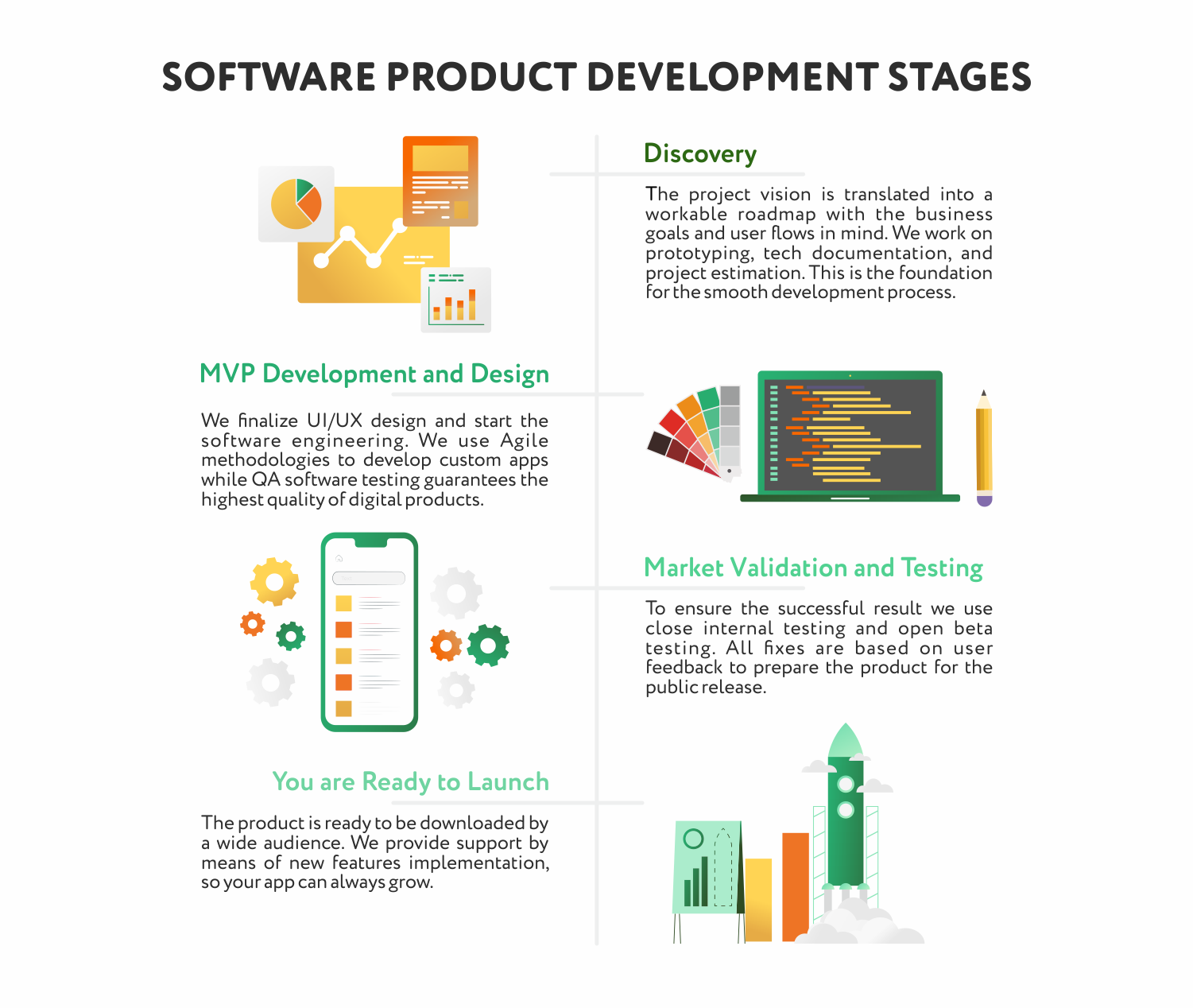
From a business perspective, there’s no way any project could be successful and have a meaningful impact on business unless the thorough preparation is done in advance. To avoid a situation when the project is technically successful in terms of the architecture of the website or mobile app, but achieve nothing in terms of business. Sadly this is how many projects end up is there was no discovery phase initially. The software development discovery phase allows aligning technical solutions with software product development.
Once you know the main challenges and needs of your potential users, you can focus on strategy, user experience, content, visuals, functionality and technical details of the project. Consequently, the discovery phase will tackle any uncertainties of the project and reduce risks.
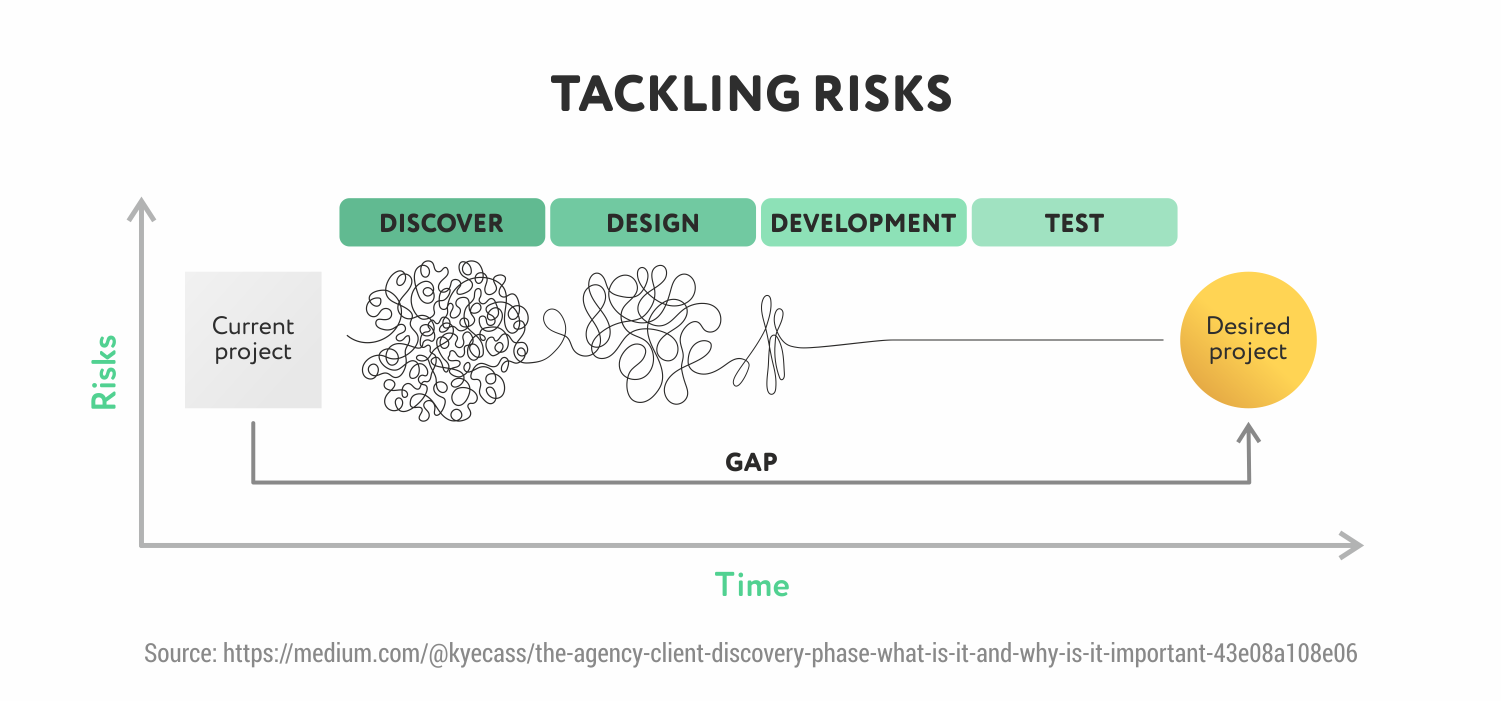
In fact, the discovery phase fills the gap between the project’s current state and how to get a desired state of the product. Due to the outcomes of the project discovery phase, a team will be able to come up with the perfect solution precisely for each client’s case.
Steps of the Discovery Process
Every project follows a discovery phase template which is based on the main three domains: business, user and market. It may sound simple and easy, but every step of the discovery phase requires thorough research. So later, based on the research results there will be possible to develop the main project drivers. It is a complex process that include activities, such as:
Establishing business and project goals;
Identifying what a successful result would be;
Evaluating the main competitors in the market;
Conducting market and user research to identify target users;
Mapping the user journey.
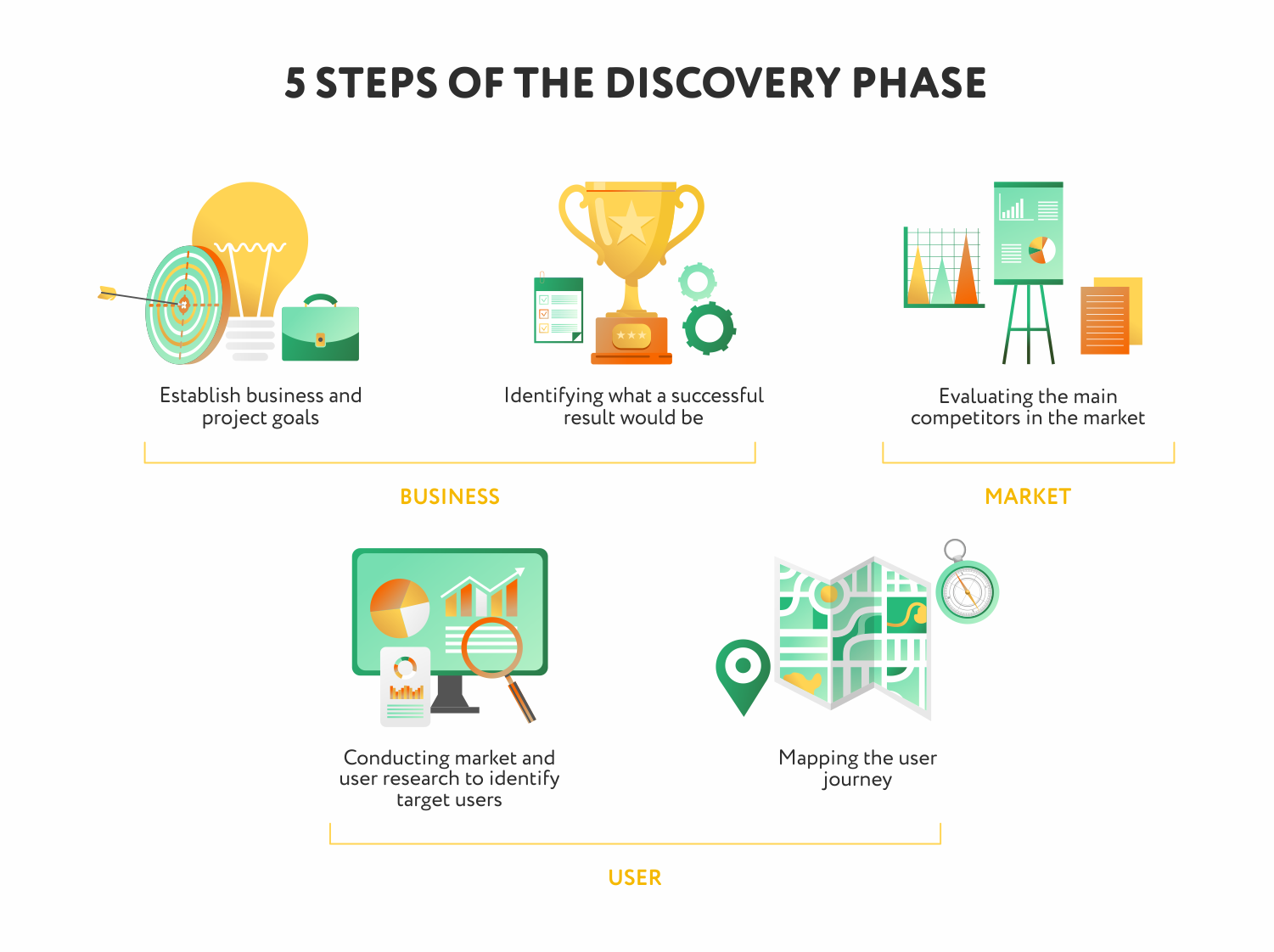
The discovery phase is, essentially, meant to define all of the technical requirements of your website, and ensure that they can be implemented within your timeframe and budget. In fact, the discovery process is the most essential stage of the software development life cycle.
Reasons to Make the Discovery Phase
Despite providing the purpose and direction of the project, the discovery has a few more benefits. Let’s see why do you need a discovery phase for your product development.
Focus on business objectives
Success is not only a product delivering on time and on budget following the precise specifications. It is much more than that. Success defines by the more broad notion such as improving conversions, increasing organic traffic, and a growing number of leads. Sometimes the mentioned objectives might be unintentionally neglected. In that case, a well run discovery phase should fix this issue. While the discovery process frames the clear vision of direction during the development process.
Focus on user needs
Quite often the projects are defined without a clear understanding of what the end-user demands. In that case, you can create a product that nobody needs which eventually would an enormous waste of time and money. The in-depth discovery phase allows tracing the real user pain points - the triggers to come up with a precise solution to the problem(s). In that case, a project discovery establishes a user roadmap and focus on the customer’s needs.
Focus on the right solutions
A discovery phase helps the team to understand the concept of the project better. So, the team can underline and evaluate the main drivers of the project rather than just followed by the proposed solution of the client. Once the expert team understands the project background they can suggest alternative solutions. Somewhat than a client (who doesn’t have a required background) might not even think is possible to implement. Such solutions are often either better, or cheaper than those proposed by the client.
Focus on the context
Finally, a discovery phase provides a context for the many decisions that happen on a daily basis during the project. It will significantly reduce risks like costly mistakes, misunderstandings, and unnecessary functionality. The better informed the digital team are, the faster good decisions can be made and the better the final solution.
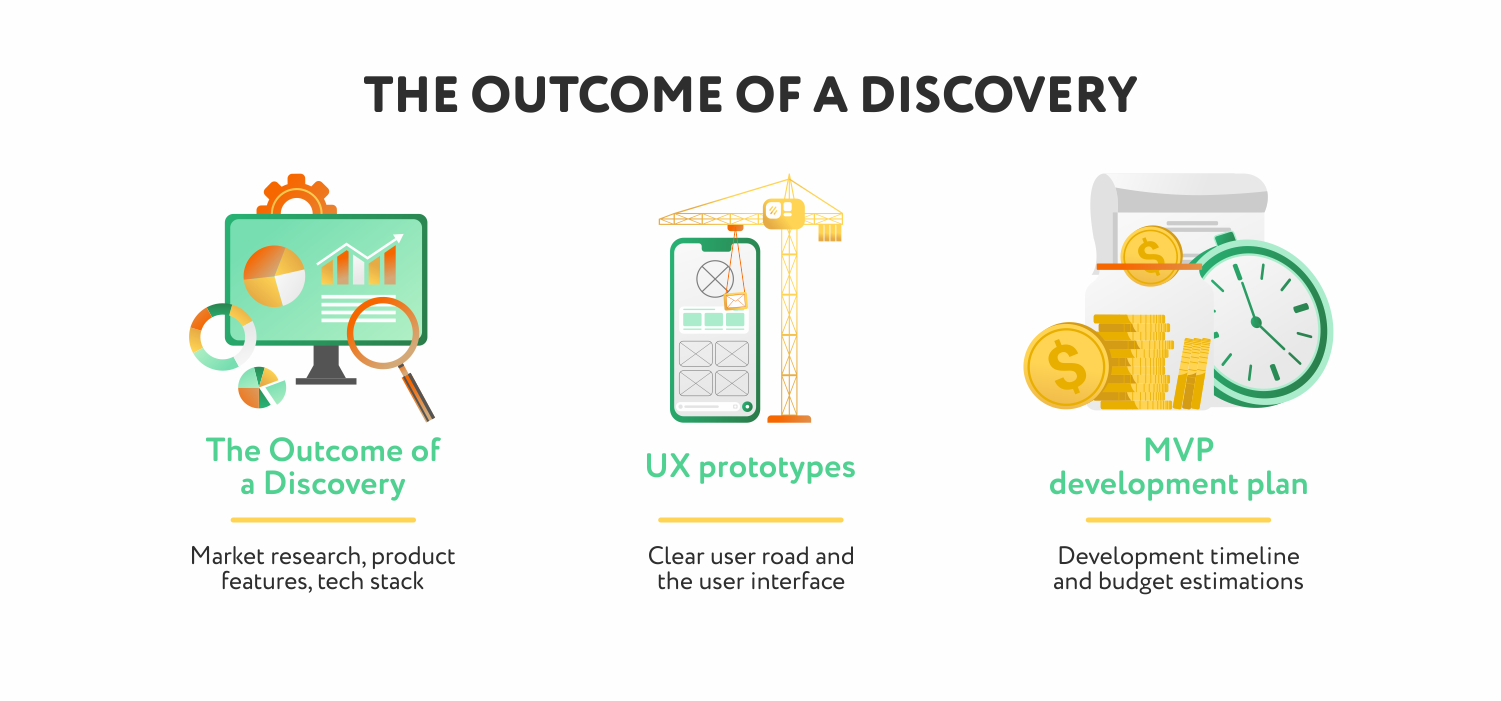
The major benefit from the discovery phase consulting is that the project requirements and specifications can be validated based on evidence, not an assumption. Consequently, a balance between the business goals, the needs, and wishes of the users is achieved.
Extra Tips to Make Discovery Phase Like a Pro
To help you understand the process better, 2muchcoffee answered the most common questions related to the discovery phase of website development.
“What is team composition?”
The discovery phase is a collective work with a focus on the common goal - produce a high-quality product. So, the entire team should be involved in a process. A business analyst, UI-UX designer, web developer/mobile developer, and project manager are must-have members of the discovery phase.
“How much time it will take to complete the discovery phase?”
The discovery phase could take from two weeks to two months. The duration is directly correlated to the project complexity and usually, it should not take longer than 10% of the entire project length.
“What are the key results of a discovery phase?”
The digital product of an effective discovery phase will include software requirements specification, a clear user roadmap, UX wireframes and prototypes as well as MVP development plan. Also, there will be included a timeline and budget estimations of the overall product development.
“How much input is required from me (as a product owner)?”
At the very beginning of the discovery phase of the new product development, there will be several meetings with a project manager, UX designer, and tech lead. Each meeting will be no longer than one-two hours. The team will be collecting the necessary information about the project, like your requirements, vision, and wishes. Once the team gets a better understanding of the project, the process won’t require your constant input.
“Should I expect any reports during the discovery phase?”
Yes. As the team of experts moves through the discovery phase, documentation is produced to capture all the key findings along with any follow-up actions that need to be further explored/answered. These documents are typically stored within a central location (such as shared drive or wiki) and made available to all members of the project team. The documentation provides answers to the questions:
Who are the current project team and what are their responsibilities?
What is the project vision/goals and objectives?
What are the potential risks identified and what are their impacts?
What is the result and analysis of the research?
What user stories/requirements are we looking to deliver against?
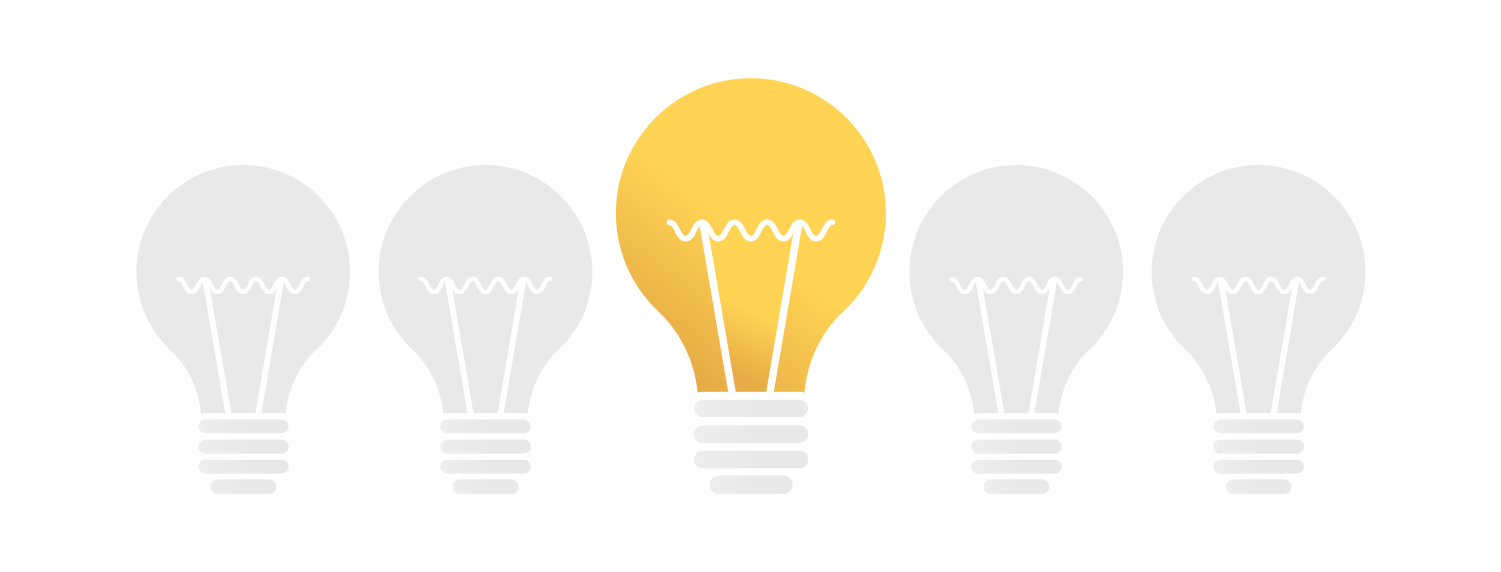
Need Help in a Discovery Phase?
For new startups to navigate the business labyrinth might be quite overwhelming. That is why 2muchcoffee provides the discovery phase consulting services. Our mission is to help you to fulfill the potential of your new business idea. The purpose of our managers and dev team is to assist a client with building a robust digital product by means of framing the best solutions.
Throughout the discovery phase, our team is trying to understand from the client:
What do you have at the moment in terms of idea, specifications, plan, systems, tools, processes?
What is the desired state of the product in the future?
What we (as a team) need to know to achieve the desired results?
For example, a startup from California (the name is under the NDA) had only a high-level business idea and a draft of a business plan to build a multifunctional marketplace. As a startup partner, we gathered the team of a business analyst, UI/UX designer, backend developer, frontend developer, QA specialist and project manager to discuss the project.
First of all, we start our Discovery Phase with the workshop to discuss the project’s potential with the client. Our aim was to collect as much information as possible about the product vision and what was the initial motivation to come up with such an idea. Framing the client’s point of view was crucial at that stage since our team needs to find the right solutions based on the client's wishes.
Later business analyst was responsible for analyzing the product idea and conducting market research. We put under scrutiny a client’s main competitors since knowing the strengths and weaknesses of competitors is essential for every product’s success. We focused on their social media presence, web/mobile statistics, provided services, and killer features, types of monetization, referral systems as well as overall brand positioning. The mentioned categories were helpful to frame competitive advantages and the right business strategies for the future. The business analysis laid the ground for the detailed business model for the client’s project.
The UX design discovery phase includes user research and developing wireframes, user flows, intuitive user interface layouts, and product prototypes. A designer’s role was to create a responsive and eye-catching design for targeted customers while solving the users’ problems.
The role of the dev team provided tech suggestions regarding the project. In general, backend dev implemented web and mobile application logic with the help of a scripting language, while frontend dev was in charge of implementing visual elements of the app that users interact with through their web or mobile devices. Since the tech stack is the foundation of the whole product that will build on top, the input of developers is significant at the stage of discovery. Based on the client’s visionary idea devs suggest the suitable tech stack so the product will be scalable, with a clear code base and the right architectural decisions.
A QA specialist was responsible for ensuring the correct and flawless operation of a software product, while the project manager coordinated the schedule and budget of the project and reported issues like possible risks during the development process.
Another of our clients, a startup within an eLearning industry from California asks us to undertake a discovery phase of website development. The client provides kids with key literacy skills via an online platform. We suggest starting with analysis since not all requirements were clear and there were some solutions that needed to be improved. Our team presented the results of the market and competitors’ research, so the new and distinct business objectives were framed. Together with the client, we identify the killer feature of the app that would have all the chances to stand out from similar apps in the eLearning market.
During the UX discovery process, we developed the user flows and created wireframes for web and mobile applications. The process was tricky since the user roles had to correspond with the best practices of COPPA. In the end, we created a user-friendly eLearning tool capable of a wide range of functionality with the focus of providing educational services to the youngest of users.
As you can see we don’t simply build what the client asks us to build. Instead of it, we consider how the project fits into the current infrastructure and provide recommendations on how to build the best product it could be.
Conclusion
The discovery phase is a period when everyone involved in the project, from developers to managers and more, can get on the same page by means of researching and collecting valuable information about the product. The discovery phase at the stage of project management helps to provide answers to the following questions: What are the business goals that need to be achieved? What are the aspirational targets? How is success defined and how can any potential barriers be overcome?
The discovery phase should not be considered as a luxury, but rather as a crucial element in the chain of new product development. It will reduce the risk of misunderstandings and costly mistakes, and allow both you as a client and your team of devs and managers to make better decisions regarding your product.
We hope that the article will be helpful to you. In case you still have any questions or suggestions feel free to contact us and we gladly assist you in any inquiries.
